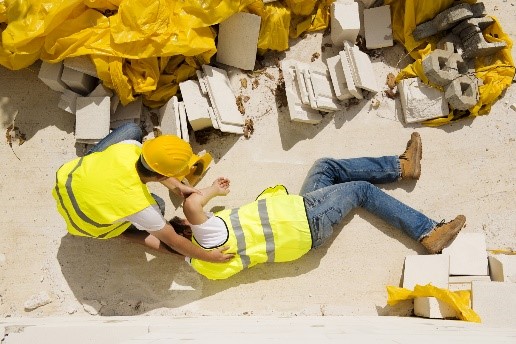Work Safe, Live Safe, Stay Safe: ‘Struck By’
In the construction industry, falls, followed by ‘struck by’ are two of the leading incidents. Most of the time, when discussing ‘struck by’ incidents, we automatically think about someone getting hit by a piece of equipment such as a forklift, excavator or other equipment. However, that is not always the case. Most ‘struck by’ incidents are caused by something falling from heights and striking an employee below.
LPR’s practice is that that any tools, equipment or materials are required to be secured with lanyards or rope to prevent the items from falling. Materials stored on upper levels should be stored at a minimum of 6’ back from the edge.
In addition, inspection of tool lanyards should be performed each day, just as we would do with fall protection. If a tool lanyard is found to be damaged, remove it from service.
Did you know…?
- In .5 seconds, an object will fall 4’ with a fall velocity of 16.08 feet per second and reach a speed of 10.9 MPH
- In 1 second an object will fall 16’ with a fall velocity of 32.17 feet per second and reach a speed of 21.9 MPH
- In 2 second an object will fall 32.45’ with a fall velocity of 64.35 feet per second and reach a speed of 43.87 MPH
- What is the speed of terminal velocity? That depends on several factors, however, here we will use a typical .30-06 bullet dropping downwards. Wither the round is fired straight up into the air or dropped from a tower, the bullet will reach terminal velocity at almost 200 MPH traveling at 300 feet per second.
If a bolt is dropped from an elevated level of 30 feet, it will hit the ground in approximately 1 second and reach a speed of approximately 21 MPH. If this bolt were to hit a person on the way down, it would cause serious injury or potentially death. Of course, the farther it falls the more serious the injury as the speed increases with distance. In the construction industry, most items that are dropped from heights do not always fall directly to the ground. They tend to ricochet down through the steel frame works of the structure ending up 20, 30 even 50’ away from where it would have landed coming straight down.
Imagine this Scenario:
A welder at elevation 310’ pulled some welding rod out of a rod caddie, dropping one rod through the grating. On elevation 242’ an employee was starting up the stairwell, the next thing he knew, he had a welding rod sticking through the bill of his hard hat 3”. He was lucky that it went through the bill and not the top of his hard hat.
It is up to all employees to help “STOP THE DROP” on our construction projects. The next item dropped from heights may just find you or your fellow employee when it reaches the bottom of its fall.
Let’s continue to strive towards a Safety culture where no one gets injured and everyone go home at the end of the day.
Blog entry submitted by:
David Terry – Safety Manager

